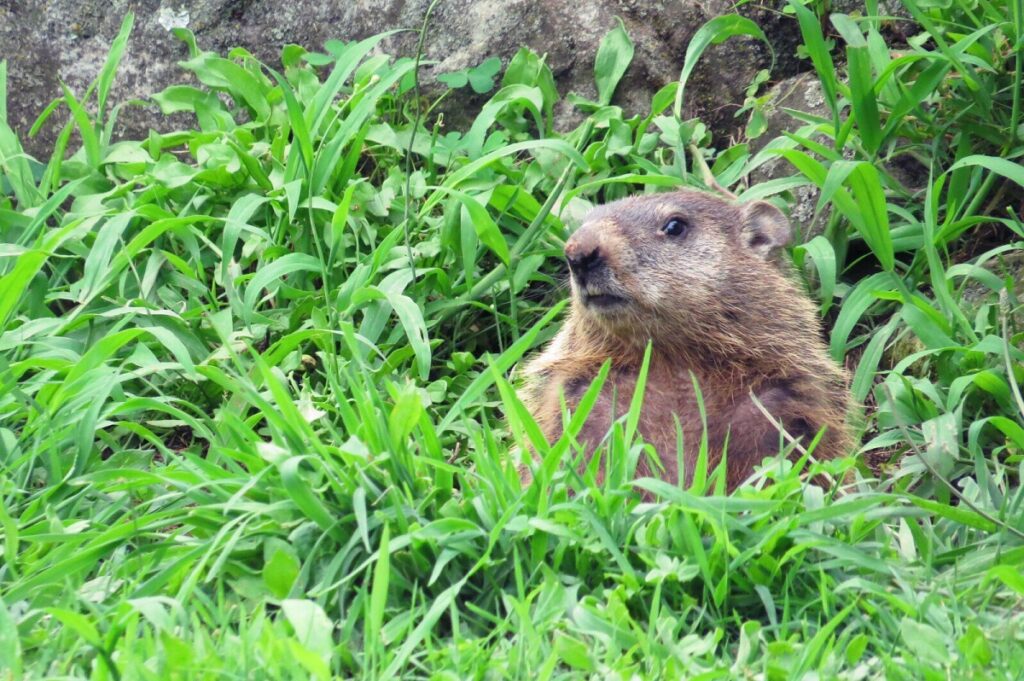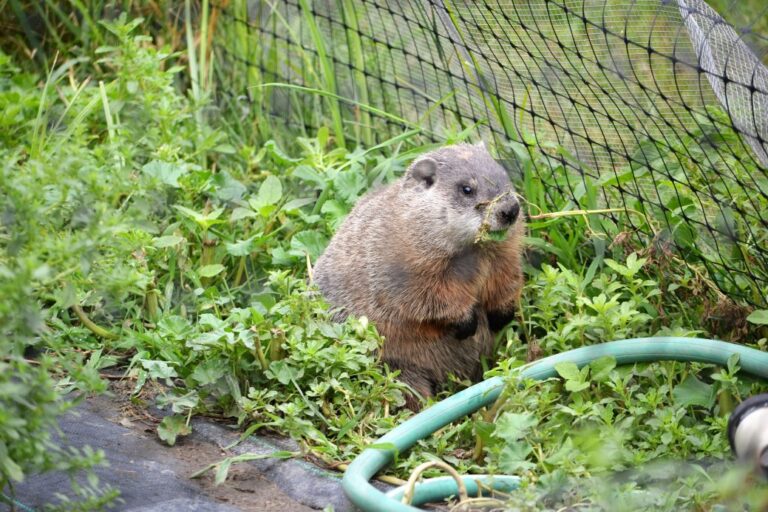
June 23, 2021
Is It Bad To Have A Groundhog In Your Yard?
Have you just spotted a groundhog in your yard and wondering if you should worry? The short answer is YES, you should.
Groundhogs, also known as woodchucks, are aggressive animals that are hard to get rid of when they invade your property. These rodents usually dig burrows in grassy areas and eat through gardens causing a lot of damage.
They can also cause serious structural damage through burrowing. In addition, they carry ticks and fleas which can pass diseases like Powassan and Lyme to pets and humans.
Once they invade your yard, it can be really hard to eliminate them on your own because they are very aggressive. Thus, it is always the best option to contact an experienced pest and wildlife specialist who’s got the tools and knowledge to deal with your groundhog problem.
How Do You Tell If You Have A Groundhog Active In Your Yard?
Common signs of damage that indicate groundhogs are active in your yard include:
– Raised ridges crisscrossing your yard will be easily visible
– You will notice raised, multiple mounds of dirt in your yard. These mounds resemble volcano-like swellings and are the entrance and exit of groundhog holes in the ground
– If you spot areas in your yard that feel squishy or the soil is very loose
– If you realize that some areas in your yard have dead or discolored grass that follows a specific path
Other damages that groundhogs are likely to cause include damage to the grass, tearing of tree roots, and flower bed damage. These damages will make your yard look unsightly!
What Attracts Groundhogs To The Yard?
As expected, the main thing that attracts groundhogs to your yard is food. These animals are herbivores and mainly feed on plant matter.
Their favorite foods are alfalfa and clover but they feed nearly on any plants such as grass; weeds; dandelion greens; herbs; fruits like strawberries or blueberries; vegetables like cucumber, green beans, corn, or lettuce.
Groundhogs feed a lot to gain enough weight that will sustain them during hibernation. Therefore, when they invade, they will eat anything that they come across in order to gain enough weight that will sustain them during the winter season, and in the process, they will leave a lot of damage. That is why you need to be worried when you spot them in your backyard.
Groundhogs can also skillfully climb trees, fences, and walls. They will climb mainly to escape predators and in search of food. Find out how to prevent them from damaging your yard and keep them out for good!

How Do Groundhogs Dig Holes In The Ground?
Groundhogs spend most of their time in underground burrows which can be as long as 6 feet deep. These underground burrows usually have dozens of entrances and exits. That is why it is very difficult to trap a groundhog if you lack the necessary knowledge and experience.
When digging inward for several feet, they incline the tunnel upward for a few feet. They will then proceed to dig horizontally for 15-25 feet to prevent the tunnel from flooding in case it rains.
Groundhogs are very clean animals. From their main tunnel, they usually dig another tunnel just a few feet apart, which is exclusively used as a latrine. Once one latrine is full, they usually seal it off and dig another latrine elsewhere.
The main burrow is used for raising children, sleeping, and hiding.
What Month Do Groundhogs Come Out?
Groundhogs are typically most active during early spring. This is because the weather is usually ideal for them during this time.
During the warmer spring and summer months, they spend most of their time sheltering in their cool burrows and only come out to feed in the early morning and evening when temperatures have dropped.
They usually start to hibernate from mid-October all the way to February. By the time they start hibernating, they need to have gained a minimum weight of seven pounds in order to survive.
Are Groundhogs Aggressive To Humans?
It is very rare for groundhogs to attack humans. However, when they feel threatened or when they feel that their babies are in danger, they may attack.
A few cases of groundhogs attacking humans have been reported but injuries are not that serious. However, in some cases, the injury can be fatal, especially if they carry rabies.
Due to the damage they cause, it’s important to remove groundhogs from your property as soon as you notice any signs of their activity. Contact Westchester Wildlife today and let us help rid you of groundhog problems efficiently and safely.
Our team of licensed technicians has the skills and tools necessary to carry out a humane wildlife control and removal from your property. Our humane groundhog removal services are the best way to keep your home safe from the potentially destructive actions of these wild animals.
So don’t wait until woodchucks have completely ruined your lawn to seek help. Trust our team of experts at Westchester Wildlife for all of your groundhog removal and control needs by calling now!
